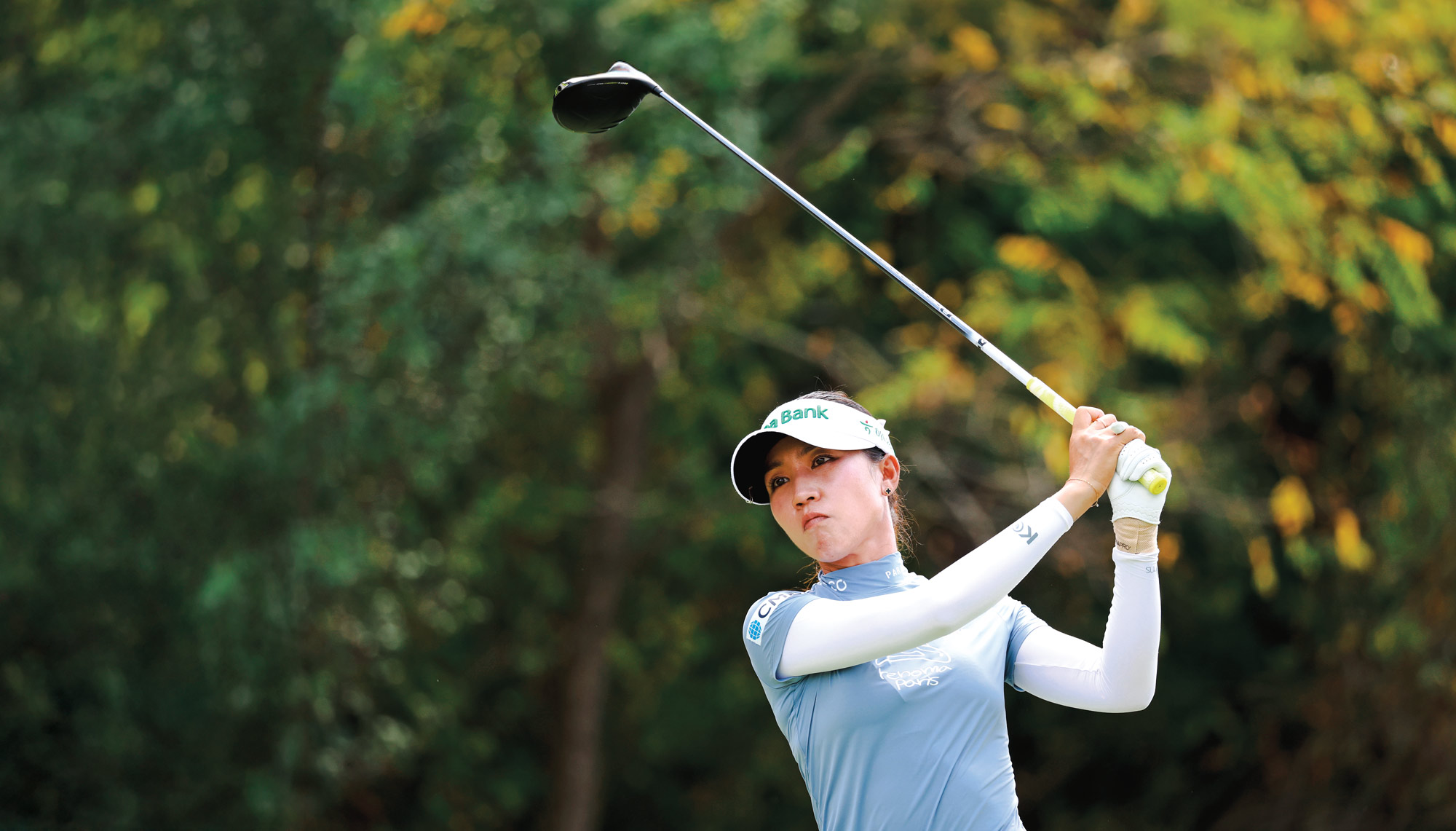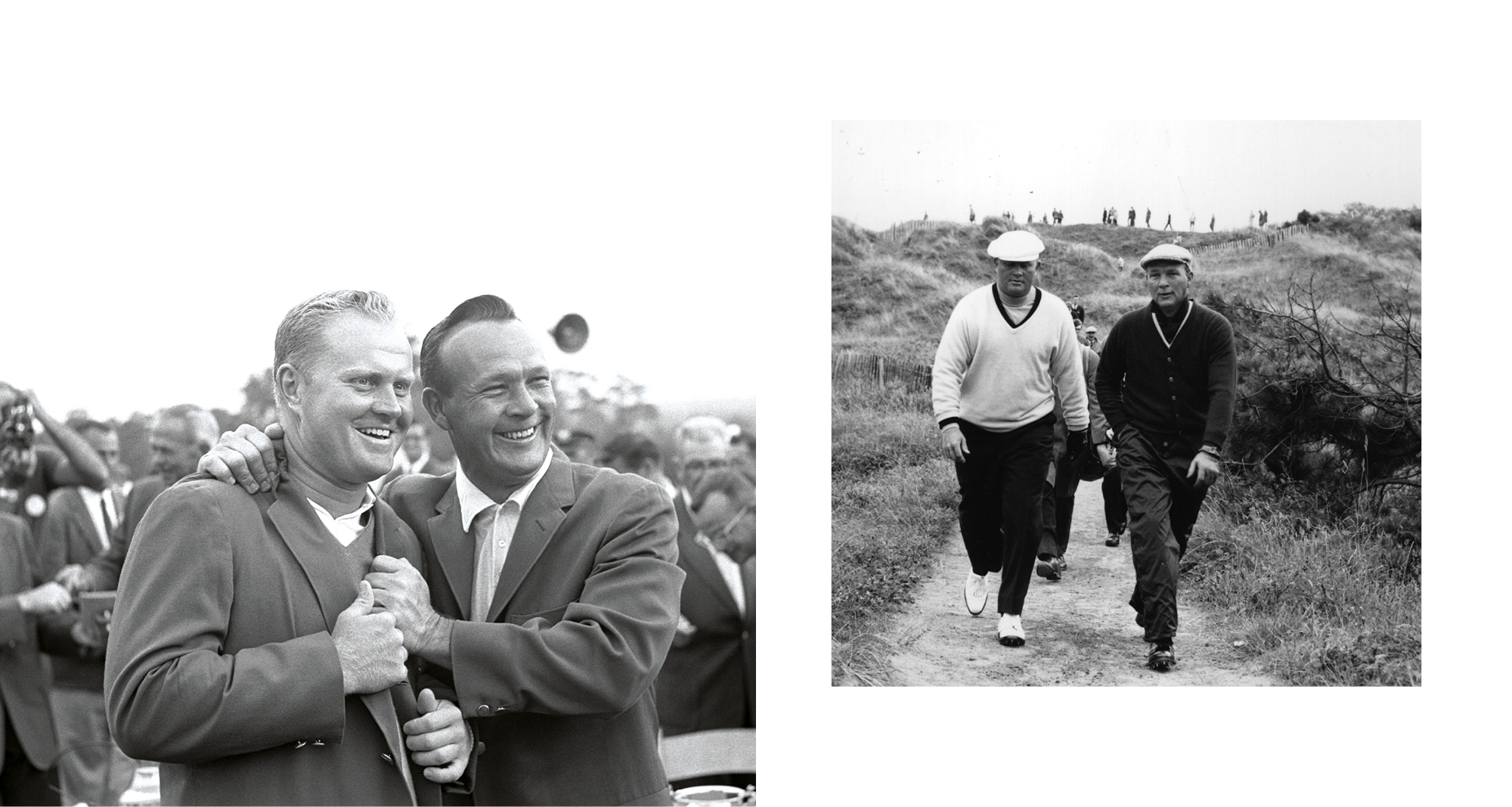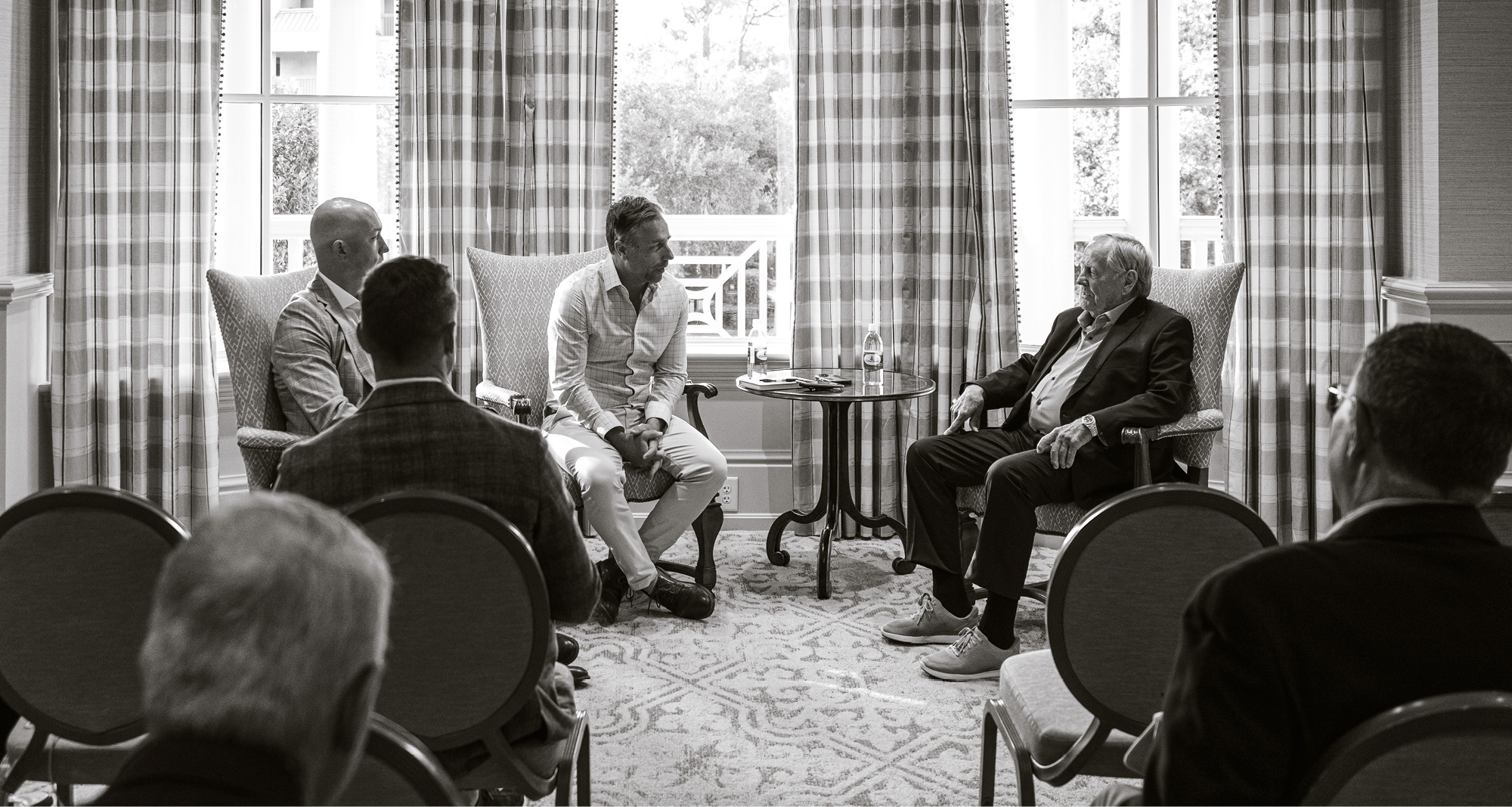
n the final day of the 2023 Kingdom Cup on Hilton Head Island in late September, Jack Nicklaus—the event’s guest of honor—sits in a room named in his honor on the second floor of the Harbour Town Clubhouse. Surrounding him, a collection of framed black-and-white and sepia-toned images hangs on the walls, some chronicling Nicklaus’ early years playing professional golf, others commemorating the two years he spent assisting Pete Dye in the design and construction of what would become The Sea Pines Resort’s flagship course, Harbour Town Golf Links.
It’s been more than 25 years since Nicklaus last set foot on the grounds of that monumental course—a collection of holes that, in many respects, catapulted Nicklaus’ future as a prominent designer himself. Yet, the 83-year-old vividly recalls many of the almost two dozen visits that he made to Hilton Head Island to create the course. Moreover, he still remembers the exchange that he had with Dye during the mid-1960s, when the late designer first invited him out to New Albany, Ohio, with the hopes that the then three-time Masters champion could provide an elite player’s perspective on his forthcoming course.
“I told him, ‘Pete, I don’t know anything about golf courses, you know that,’” Nicklaus recalls. But Dye’s response not only refuted the Golden Bear’s opinion, it proved to be prophetic. “You know a lot more than you think you know,” he told Nicklaus, who by then was already three-quarters of the way toward completing a career grand slam.
That was the genesis of a consulting partnership between major champion and course designer, a collaboration that spanned half a dozen projects, including Harbour Town, where Nicklaus later won the Sea Pines Heritage Classic in 1975. Despite his eventual success there, the Kingdom Cup’s guest of honor laughs off the idea that he helped Dye to create a course that suited his own abilities. Instead, Nicklaus jokes that he must have had Arnold Palmer’s game in mind, as it was The King who claimed the Heritage Classic’s inaugural victory, in 1969.

When it comes to Palmer, the Golden Bear’s memories are equally vast and just as vivid. “Arnold and I were always friends. I never had to fight Arnold,” Nicklaus begins, then smiles. “It was his galleries that I fought. You know, it’s hard to fight an army single-handedly.”
And with that, golf’s most decorated major champion dives into his recollections of a life spent playing alongside the dashing player from western Pennsylvania who made professional golf undeniably cool. Their relationship and rivalry officially began on September 25, 1958, a day that the city of Athens, Ohio, declared “Dow Finsterwald Day.” Finsterwald, an Athens native, had won the PGA Championship two months earlier, and to celebrate the accomplishment, the city organized an 18-hole exhibition at Athens Country Club, where Palmer and Nicklaus competed in a better-ball match against Finsterwald and Howard Baker Saunders, an amateur player who led Ohio State’s golf team to an NCAA championship in 1945.
Following the match, the four competitors staged a clinic on the first tee, which culminated in a long-drive contest. As Nicklaus recalls, the first hole was a short par-4, not much longer than 300 yards. “Arnold drove it on the green,” he says. “I whipped it about 40 yards over the green. So, my comment to Arnold was: ‘I just blew it by you forever.’ He said, ‘Yeah, but I shot a 63 and you shot a 67.’ That was our first instance of having a rivalry.”
While that rivalry is well documented (see “Friends & Foes,” page 56), theirs wasn’t a frosty one. More than three years after that exhibition, Nicklaus and Palmer were paired in the final round of the Phoenix Open Invitational, in 1962. Incidentally, the tournament marked Nicklaus’ sixth professional event during his first year on tour, and it was the first time that Nicklaus and Palmer had played together since the exhibition in 1958.
“Arnold was going to win the golf tournament, he was a mile ahead,” Nicklaus remembers. “As we walked off the 17th green, he put his arm on my shoulder, and he said, ‘You know, you can finish second here. You just need to play this last hole smart and make a birdie.’”
Nicklaus agreed, and Palmer offered a little extra encouragement. “He said, ‘Just relax and do it,” Nicklaus remembers. “So I did. I made birdie and finished second, but I thought that was an awfully nice gesture.
“Arnold and I spent a lot of time together and played tons of practice rounds,” he continues. “He always had my back, and I always had his back. That’s the relationship that we had.”
“He always had my back, and I always had his back. That’s the relationship that we had.”

While competitive to the core, the duo were also close friends who joked around with ease. Anyone who attended the many post-round parties at the Bob Hope Desert Classic in Palm Springs during the 1960s and ’70s likely saw evidence of that. With a chuckle, Nicklaus recounts one such evening where they found a woman’s wig that had fallen off one of the partygoers. “I don’t remember who picked it up or who put it on who [first], but we switched wigs back and forth,” he recalls of their impromptu dance partnership. “One of us would lead one time and then one of us would lead the other time. We had a great time with that stuff.”
Their brotherly relationship continued behind closed doors, too. During one tournament played in Florida, Palmer and Nicklaus adjourned to one of their rooms to watch TV at the end of the night. They hadn’t sat down for more than a few minutes before shenanigans ensued. “I don’t remember whether I kicked him or he had kicked me,” Nicklaus admits, “but then the other kicked back. We sat there and kicked each other in the shins for 10 minutes. We had bruises and blood running down our legs, but neither one of us was going to give up, because we were too competitive.”
Nicklaus’s fierce competitive nature fueled him throughout his career. In his prime, the Golden Bear was one of the longest hitters on tour. In fact, Nicklaus won back-to-back long-drive competitions at the PGA Championship, in 1963 and 1964, hitting drives of 341 yards and 357 yards, respectively. That he accomplished those feats using a Persimmon head driver and a wound golf ball makes them even more impressive.
“My length was always an advantage if I wanted to use it, but I didn’t use it very often,” he says. “Frankly, I preferred shorter golf courses where I didn’t have to hit my driver, courses where I didn’t have to use my length. I used a lot of discipline about how far I wanted to hit it, because I wanted to make sure that it was the right shot for the hole.”
As such, today’s professional game, as Nicklaus sees it, is a “different animal” from what he experienced on tour during his career. “I don’t know how I would’ve fared in today’s world,” he acknowledges. “When I played it was probably about 25 percent power and 75 percent strategy or shot-making. Today, it’s probably 80 percent power and not a whole lot of course management.
“Some guys today have a lot of discipline,” he adds, referencing a select few players on tour who perhaps remind him of his younger self. “Even though they’re long, they play more like I did. They’re pretty smart how they play the game. But there are some guys that just bomb it. Sometimes that works and sometimes
it doesn’t.”

Nicklaus takes a similar stance on contemporary course design. “I’m not too excited about where it’s going,” he says candidly. “I see an awful lot of guys out there who pretend to be experts on Donald Ross or Alister MacKenzie, but then do stuff that bears no resemblance to what they [Ross or MacKenzie] did.”
Beyond those modern-day restoration projects and the new layouts inspired by Golden Age design principles, a slew of today’s new builds have suffered, in Nicklaus’ opinion, from a lack of strategic concepts. In short, he sees visual aesthetics dictating decisions more than golfing acumen. “The guys doing golf course design today—I don’t know how they play, but I don’t think they’re really golfers,” he says. “Pete Dye was a good player. Pete understood the game. I think I understand the game. Tom Weiskopf understood the game, and [Ben] Crenshaw understands the game. But I don’t know if these other guys do. They might think that big deep bunkers and a wild look is what a golf course should be. I personally thought that it ought to be some golf strategy.”
Although Nicklaus’ philosophy on course design hasn’t changed over the years—namely that strategy should be at the core of most decisions—his approach to implementing that strategy has. As Nicklaus explains, he previously designed golf holes starting from the back tees, then appropriately positioned the location of other tee boxes as he moved forward. Today, however, he starts from the members’ tees and makes sure each hole is playable from there. Once he’s accomplished that, Nicklaus then goes back and adds what he calls the “gorilla tees.”
As way of example, Nicklaus’ home club in Jupiter, Florida, The Bear’s Club, is currently home to 31 PGA Tour players and recently underwent a comprehensive restoration overseen by Nicklaus himself. When he decided to renovate the course, Nicklaus made sure to keep the fairways wide in the areas where most high-handicap players landed their drives. He also added dozens upon dozens of shallow fairway bunkers along the perimeter of each hole to catch errant tee shots before they rolled into more penal areas. “I watched for 23 years where people hit the ball and lost their golf ball,” he says. Those new bunkers will now keep average players in the hole, even after they hit a mediocre shot. In Nicklaus’ estimation, the renovated course will play about as difficult as it had previously for the club’s resident pros—“It’s pretty difficult to challenge the pros today,” he admits—but it will likely be four to five shots easier for the average member.
That may not be the way that Nicklaus and Dye approached the design of Harbour Town Golf Links more than half a century ago, but the course continues to challenge the world’s best each spring when it hosts the RBC Heritage, and it assuredly forces resort guests to take a calculated approach from tee to green every other week of the year. “It’s not like the modern-day golf courses that are 7,500 yards long and you stand back and just whack at it,” Nicklaus says. “It’s a golf course where you’ve got to think about what you’re doing and what is right for you. Pete Dye liked to think of golf as a thinking man’s game. He thought that you ought to be rewarded or penalized for putting the ball in a certain place on the course. I basically feel the same way.”
The world of golf (and the way the game is played) may have changed significantly since Nicklaus first teamed up with Dye, but some things—especially the duo’s seminal creation—are resolute in their significance.
“The golf course,” Nicklaus proudly declares, “still stands the test of time.”
Follow Us On


| Cookie | Duration | Description |
|---|---|---|
| cookielawinfo-checkbox-analytics | 11 months | This cookie is set by GDPR Cookie Consent plugin. The cookie is used to store the user consent for the cookies in the category "Analytics". |
| cookielawinfo-checkbox-functional | 11 months | The cookie is set by GDPR cookie consent to record the user consent for the cookies in the category "Functional". |
| cookielawinfo-checkbox-necessary | 11 months | This cookie is set by GDPR Cookie Consent plugin. The cookies is used to store the user consent for the cookies in the category "Necessary". |
| cookielawinfo-checkbox-others | 11 months | This cookie is set by GDPR Cookie Consent plugin. The cookie is used to store the user consent for the cookies in the category "Other. |
| cookielawinfo-checkbox-performance | 11 months | This cookie is set by GDPR Cookie Consent plugin. The cookie is used to store the user consent for the cookies in the category "Performance". |
| viewed_cookie_policy | 11 months | The cookie is set by the GDPR Cookie Consent plugin and is used to store whether or not user has consented to the use of cookies. It does not store any personal data. |